Google Analytics Create New Property
Google Analytics is widely used by websites to track their performance all around the globe. It is one of the most powerful Web Analytics Services that Google offers, providing reporting and tracking features to determine website performance. After Google acquired Urchin, they launched Google Analytics in 2005.
Essentially, Google Analytics gives users the tools that they need to understand their audience and customers in a better manner. You can track organic traffic, paid traffic, and view best-performing blog posts and articles on your website that yield the highest conversions.
In this article, you'll be introduced to Google Analytics 4 (GA4) and Universal Analytics simultaneously. The main aim of this article is to detail you on how to set up a Universal Analytics Property using Google Analytics 4. So, buckle up, and let's dive straight into GA4.
Table of Contents
- Introduction to Google Analytics 4 (GA4)
- What is Universal Analytics (UA)?
- A Step-by-Step Guide to Setting a Universal Analytics Property Using GA4
- Step 1: Creating a New Property
- Step 2: Making a Selection
- Step 3: Finalizing your Details
- Step 4: Setting up Data Collection
- Conclusion
Introduction to Google Analytics 4 (GA4)

Google launched the latest iteration of its analytics platform in October 2020. It's called Google Analytics 4 (GA4), and it leverages the power of Machine Learning at its core to provide insights to customers that will prove useful in setting up their Marketing Strategy.
The latest Google Analytics 4 is capable of offering smarter insights and help you identify Marketing Trends in your data. It is capable of calculating complicated trends and insights on its own, such as Churn Probability and various other predictive metrics.
More importantly, Google Analytics 4 also offers a more holistic view of your online presence, allowing users to measure interactions between the web and other apps together. So, you can compare views from other platforms like YouTube together with other organic channels.
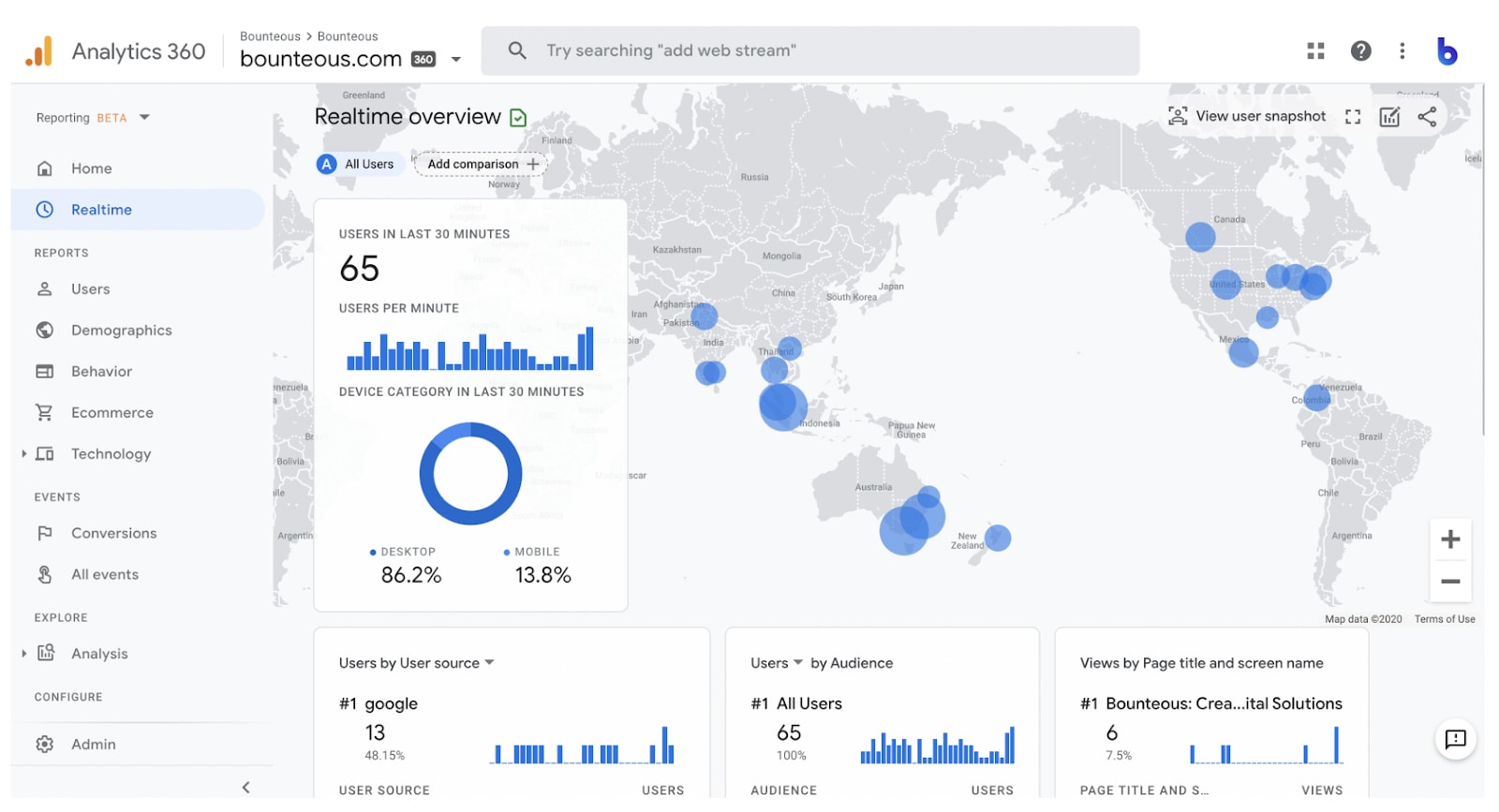
They have also overhauled the reporting structure, offering a much better view of how customers interact with your business online. You can view the entire customer journey, starting from acquisition to conversion and retention. GA4 is also built for the long-term, as it utilizes future-proof technologies like Machine Learning and enhanced privacy.
While Google Analytics 4 is now the default, many webmasters still prefer using Universal Analytics property.
What is Universal Analytics (UA)?
Universal Analytics was introduced in 2012, and completely changed the way data was harvested by Google. It offered better codes for websites that could capture more accurate data. Google encouraged its users to migrate to Universal Analytics when it was introduced.
While both Google Analytics and Universal Analytics (UA) offer user tracking options, the latter offers far more depth with tracking codes, unique User IDs, and even capturing offline data from multiple sources like Call Centers or other Lead Generation Systems.
For the uninitiated, the property is simply where data goes for processing by Google Analytics. When Universal Analytics was rolled out, it became the prime standard for user tracking across the web. In 2020, Google introduced another beta tracking property, called "Web + App Property".
This was ultimately rebranded and released as Google Analytics 4. Prior to the release of GA4, apps and websites would be tracked via a single Analytics account, but with two different properties, for the app and the website respectively. However, with the release of GA4, these two properties are now bundled into one view.
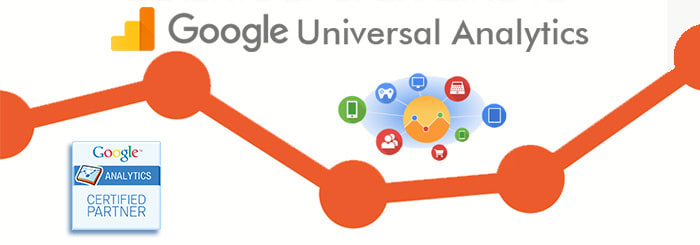
Universal Analytics offers one major advantage over GA4 – it can show multiple views for each property, thus enabling various configurations and better Data Filtering.
Attribution Modeling is also quite different between Universal Analytics and Google Analytics 4. Currently, GA4 offers exclusively last and first-click attribution, which completely ignores modeling for "Position-Based Attribution" or even "Linear Attribution". That is one of the main reasons why many people would still want to set up a Universal Analytics Property using GA4.
While GA4 is the default across all newly created properties in Google Analytics, it is still possible to create a Universal Analytics Property, though it's been slightly obscured by the company. Let's see how it's done.
Hevo Data is a No-code Data Pipeline that offers a fully managed solution to set up data integration from Shopify and 100+ Data Sources (including 30+ Free Data Sources) and will let you directly load data to a Data Warehouse or the destination of your choice. It will automate your data flow in minutes without writing any line of code. Its fault-tolerant architecture makes sure that your data is secure and consistent. Hevo provides you with a truly efficient and fully automated solution to manage data in real-time and always have analysis-ready data.
Get started with hevo for free
Let's look at some of the salient features of Hevo:
- Fully Managed: It requires no management and maintenance as Hevo is a fully automated platform.
- Data Transformation: It provides a simple interface to perfect, modify, and enrich the data you want to transfer.
- Real-Time: Hevo offers real-time data migration. So, your data is always ready for analysis.
- Schema Management: Hevo can automatically detect the schema of the incoming data and map it to the destination schema.
- Scalable Infrastructure: Hevo has in-built integrations for 100's of sources that can help you scale your data infrastructure as required.
- Live Monitoring: Advanced monitoring gives you a one-stop view to watch all the activities that occur within Data Pipelines.
- Live Support: Hevo team is available round the clock to extend exceptional support to its customers through chat, email, and support calls.
Sign up here for a 14-day free trial!
A Step-by-Step Guide to Setting a Universal Analytics Property Using GA4
Now that you have a basic understanding of Google Analytics 4 and Universal Analytics, let's set up a Universal Analytics property using Google Analytics 4.
- Step 1: Creating a New Property
- Step 2: Making a Selection
- Create both a Google Analytics 4 and Universal Analytics property
- Create a Universal Analytics property only
- Step 3: Finalizing your Details
- Step 4: Setting up Data Collection
1) Creating a New Property
When you first log into your Google Analytics account, look to the bottom right. You will see three options: Attribution, Discover, and Admin. You need to click on Admin. There, you will see settings for your accounts, and the websites linked to your Google Analytics.
From there, just click on the "Create Property" button, as shown below.
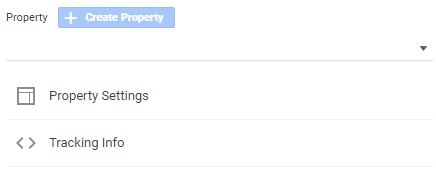
Once you click on "Create Property", it will ask you to enter details. You have to enter the name of the property, the currency, time zone, and fill out all relevant details. Once done, click on "Show advanced options".
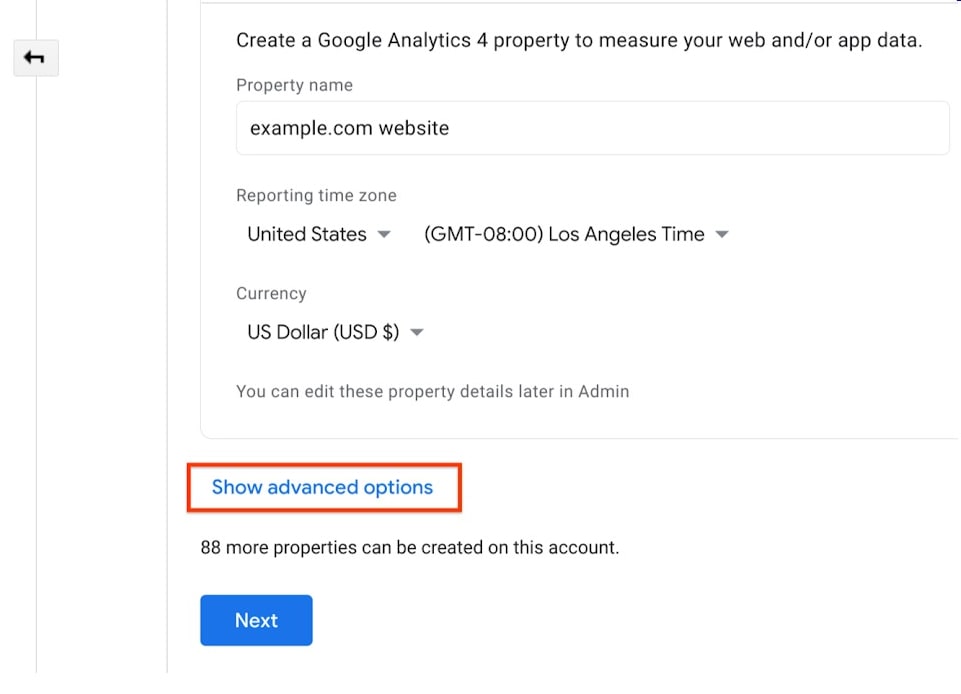
A new section will appear, as you can see in the next snapshot.
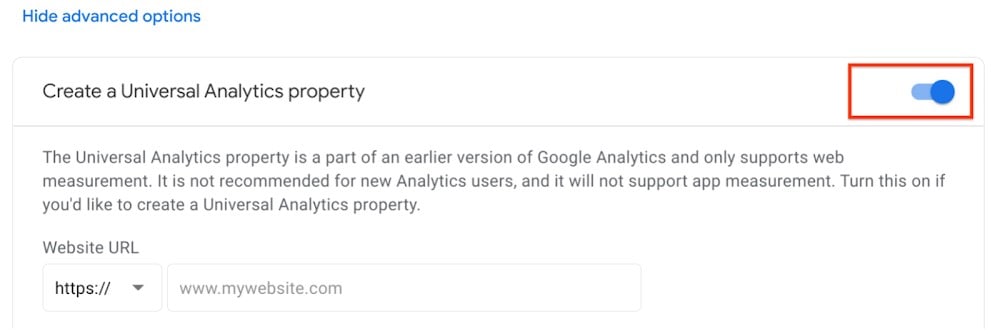
Here, you just need to toggle the switch on the right to "Create a Universal Analytics property". At the bottom, you also need to enter the URL of your website and determine the protocol. If you haven't yet secured your website with the HTTPS protocol, it's best if you do so. Either way, select from HTTP or HTTPS.
Keep in mind that most domains support UTF-8 characters in URLs only. It's best to use those or add "Punycode". Once you have added the domain, it's time to move to the next step.
2) Making a Selection

Once you click on "Next," you will have two options. You can either:
- Create both a Google Analytics 4 and Universal Analytics property
- Create a Universal Analytics property only
Create both a Google Analytics 4 and Universal Analytics property
If you choose this option, it will create a Google Analytics 4 property parallel to your Universal Analytics property. Once you add the former to your site as well, it will send data to both properties simultaneously. You can switch between both the GA4 property and Universal Analytics property using the Property Selector. The screenshot below shows a Universal Analytics property.
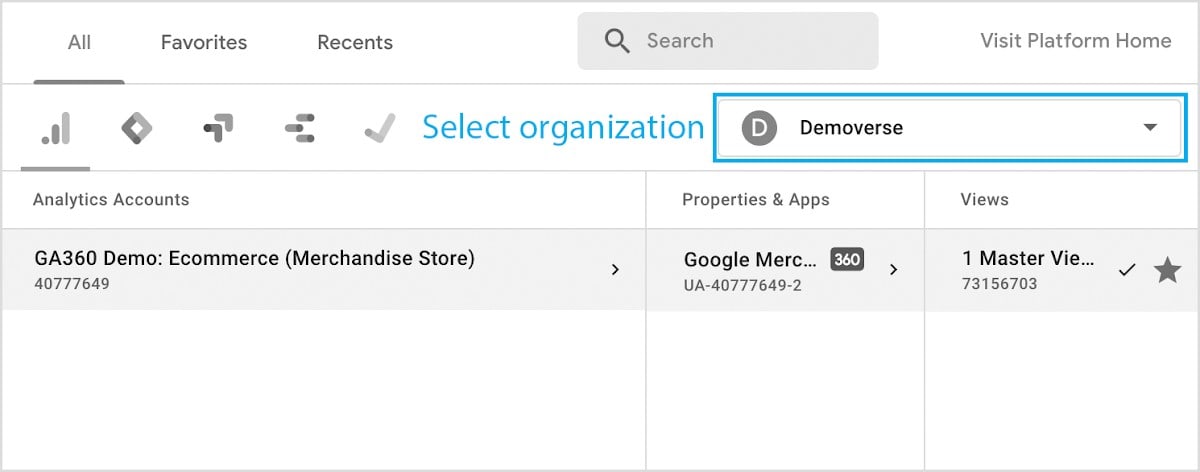
You can use the drop-down to change and view data from the GA4 property that was created as well, as shown below.
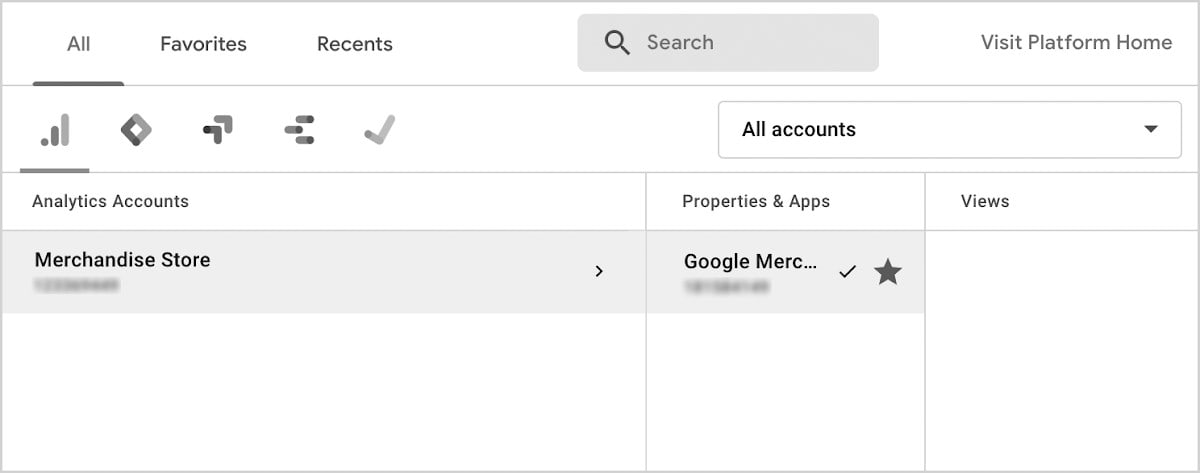
More importantly, you should know that by creating both properties, you are creating a connection that makes data migration easier between your GA4 property and Universal Analytics property.
In order to identify each property, just look at the prefix before the numeric code. Universal Analytics properties are labeled as "UA-1234567" whereas Google Analytics properties are labeled as "GA4-1234567".
Create a Universal Analytics property only
If you only want to create a Universal Analytics property and track data this way, just select the last option.
3) Finalizing your Details
Once you have made a selection, you will be asked to enter details about your business. Provide all the information that Google requires, press "Next," and you will be shown the Terms and Conditions along with the Data Processing Amendment. Once you accept, just click "Finish " and you are done!
4) Setting up Data Collection
While you have set up the properties, you also need to set up Data Collection, so analytics can view all your data. If you choose to set up a Universal Analytics property only, you can just paste the Tracking ID into the Tracking ID field on Google Analytics, if you are using any CMS such as WordPress or Shopify.
On the other hand, if you choose to create both a GA4 and a Universal Analytics property, you will have to paste the entire Global Site Tag in the custom HTML field provided by your website platform. This is necessary if you want to pull the data into both the UA and GA4 properties.
- Search for gtag.js: This is the site tag that you need to search for. The code will begin from "Global Site Tag" and will end with "</script>".
- Copy and Paste: You need to copy the entire page tag in the custom HTML feature provided by your website building platform. If you are using WordPress, the instructions are fairly easy to follow. If you are using any other website builder like Shopify, Hubspot, or even Godaddy, you may want to refer to the help section on their platform.
Several platforms are supported, such as
- Wix
- Weebly
- Salesforce
- WooCommerce
This list is not exhaustive. So, it's best to get in touch with the Support Team when you're copying the page-tag in the custom HTML feature. More importantly, you should know that Data Collection does not begin immediately. It can take anywhere between 30 and 45 minutes for Data Collection to begin, so there's no reason to worry.
If Data Collection does not begin even after an hour, you may want to contact the Support Team and figure out what you are doing wrong.
Conclusion
Wow, you've made it to the end. Now you're all set to create a Universal Analytics property in Google Analytics in a matter of no time. In this article, you were given a brief introduction to Google Analytics 4 and Universal Analytics. The article further helped you to set up a UA property using GA4.
Hevo Data with its strong integration with 100+ Sources & BI tools such as Google Analytics allows you to not only export data from sources & load data in the destinations, but also transform & enrich your data, & make it analysis-ready so that you can focus only on your key business needs and perform insightful analysis using BI tools. In short, you can easily extract data from both Universal Analytics property and GA4 property using Hevo to track overall business performance.
visit our website to explore hevo
Give Hevo Data a try and sign up for a 14-day free trial today. Hevo offers plans & pricing for different use cases and business needs, check them out!
Share your experience of setting up a Universal Analytics property using Google Analytics 4 in the comments section below.
Google Analytics Create New Property
Source: https://hevodata.com/learn/universal-analytics-property/
Posted by: ballardloortambel1953.blogspot.com

0 Response to "Google Analytics Create New Property"
Post a Comment